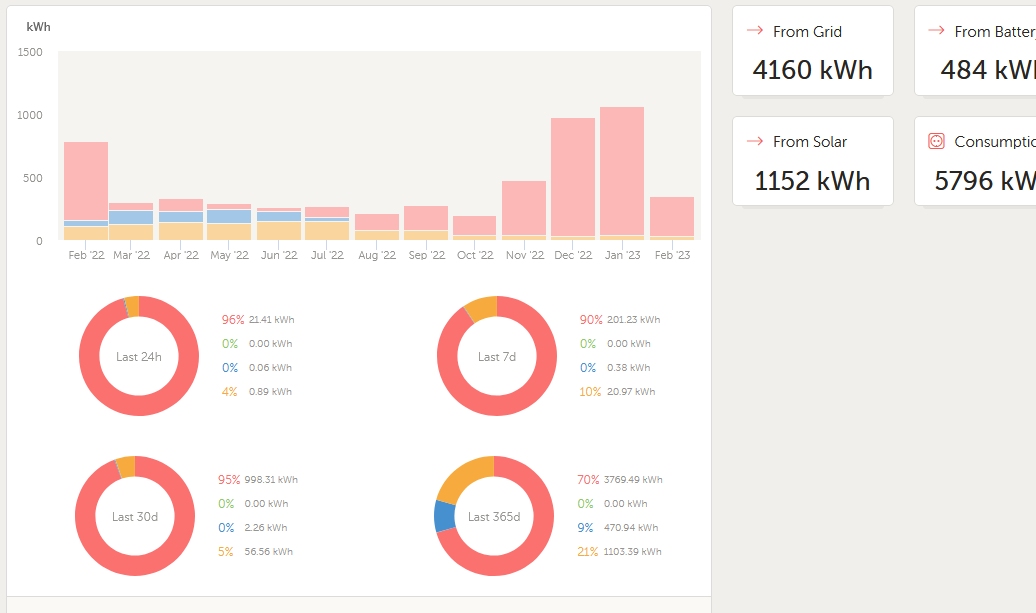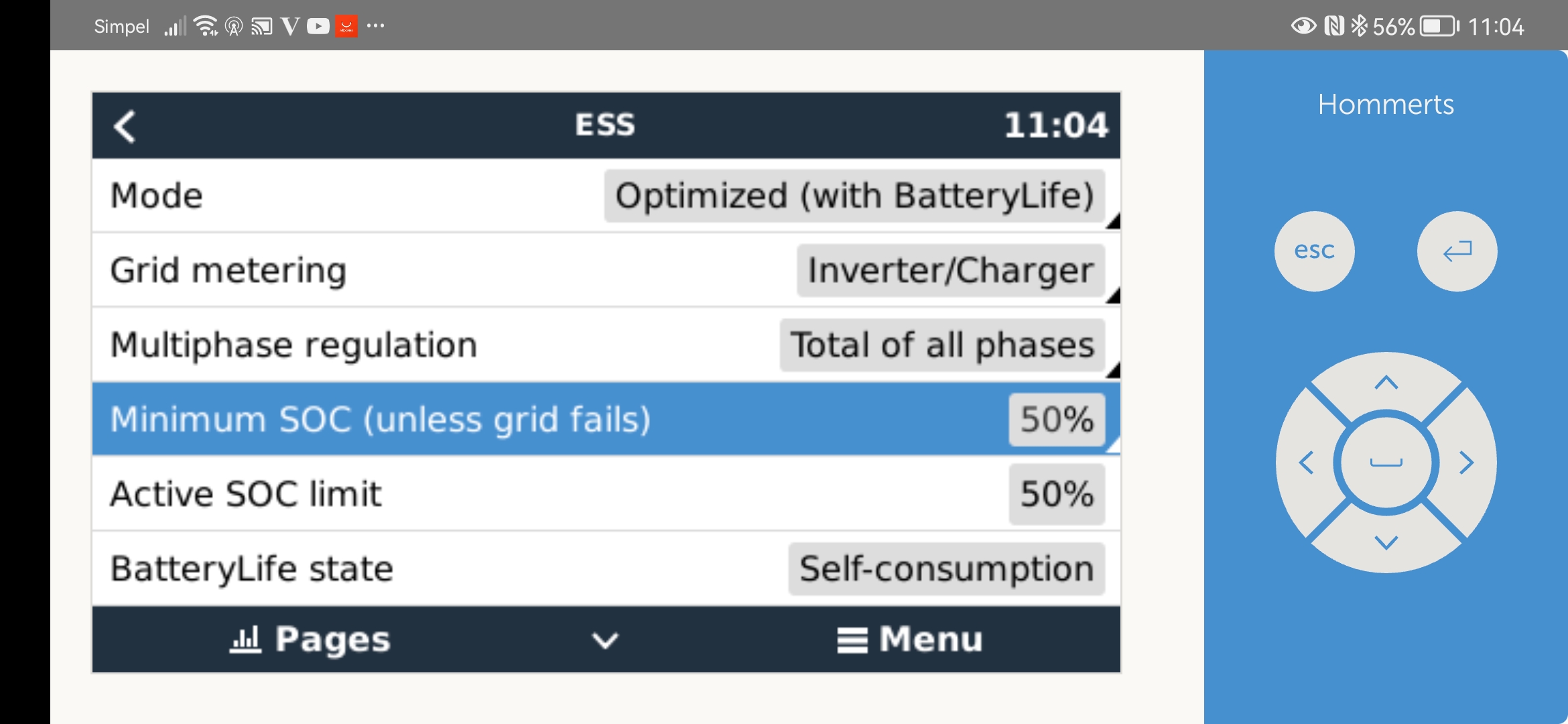In the past (with to my best knowledge the same settings) power was drawn from the batteries till SOC reached its lower setpoint. Either the "hard" setpoint without, or the dynamic with "battery life".
For a considerable time, the batteries keep charging from the grid day and night and SOC more-or-less stays on 100%.
I tried multiple times to reset the parameters, updated firmware, reprogrammed everything from scratch but SOC is stubbornly staying at 100%
What else can I do to get things back to the wanted state of uncharging at night and rescharging (if solar) at daytime?


